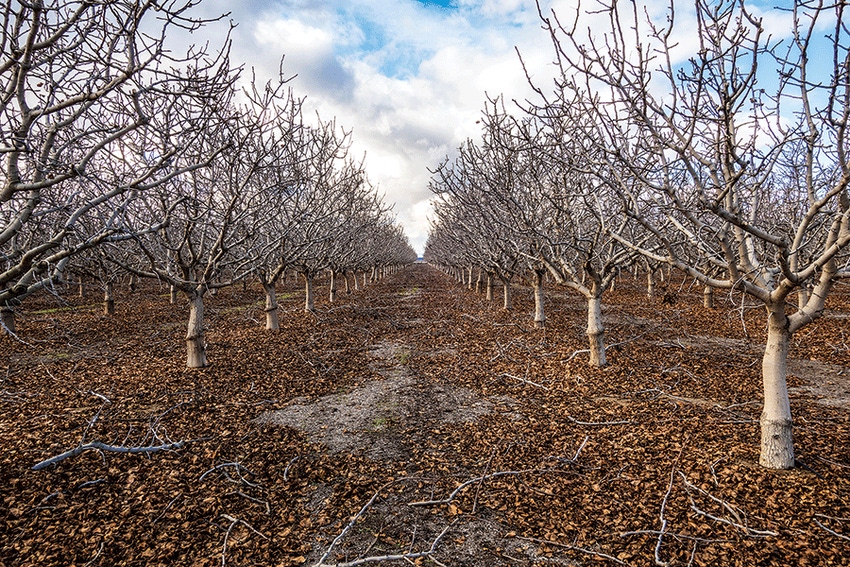
With tree nut harvest behind and secondary sanitation efforts underway, San Joaquin Valley and Sacramento Valley nut growers are preparing to begin post-harvest weed management programs, the first step in a comprehensive effort to ready fields for the spring season.
"This is the time of year that the majority of all tree nuts, fruits, and vines are prepping for what we call our fall-winter weed control program," says Mick Canavari, University of California Agriculture and Natural Resource Extension farm advisor emeritus.
There are two major weed control events each year, he says — the fall-winter weed control program, the most important of the two, followed by a second major push to control weeds in the spring.
"The fall-winter weed management event begins now and will continue for the next month or two,” he says. “What we have now is the flushing of our winter annual weeds, those that like the cool climate. As our trees become dormant in the weeks and months ahead, these weeds flourish, and we must control them during the winter. If we don't do that before the rainy season starts, wet orchards will delay us from taking effective weed control measures until spring.”
If cool weather weed varieties can grow unimpeded, they begin turning to seed, often long before the orchard's heavy soils dry out enough to allow equipment access, Canavari says, and when this happens, it puts growers behind with weed problems and complicates effective control strategies.
"If this is allowed to happen, even over just a single year of letting winter weeds turn to seed before spring weed control efforts can be applied, then it's like going back to step one — starting over again in the fight against weeds in the orchard. It's very important to perform this fall-winter weed management cycle to prevent that from happening."
As far as the timing of a fall-winter weed management program, he says, northern San Joaquin Valley and Sacramento Valley growers will begin the process a little sooner than those in the southern San Joaquin Valley because rains come earlier in the north. In some instances, stubborn winter weeds will require a second treatment, especially if the season is wetter than usual or if winter weed emergence is delayed.
"These are things you can't really plan for,” Canavari says, “though with today's technology it is becoming easier to determine when the rainy season will set in. You simply want to complete your fall weed management before it gets too wet to get into the orchard."
Another weed concern in California orchards is development of weed resistance. While the issue is not as prevalent as in Midwest soybean fields, where treated seeds add to the overall problem, he says weed resistance is a concern for tree nuts, too. “We have learned a lot from our Midwest and southern farming brothers.
To begin, we generally are not spraying every square inch of an orchard like you would if you were growing thousands of acres of soybeans. Our row spacing and the spacing between trees is sufficient for us to spray more efficiently, and only in the areas of the orchard that are open and more subject to weed growth.”
The best method to fight resistance with glyphosate and other herbicides is by mixing various chemical modes of action in the tank, he says. "You probably won't find a tree nut grower in California who isn't mixing multiple modes of action in a single tank. In fall and spring spray seasons, we are mixing both pre-emergence and post-emergence herbicides, one to treat the existing problem and one to lay down a residual for weeds that will be emerging in the weeks ahead.”
It is common for growers to use glyphosate and glufosinate in the same tank, Canavari says, and often with a third or fourth mode-of-action herbicide. By doing so, he believes, it helps to curtail resistance issues. "We have been doing this for some time now, and it is proving to be effective in our orchards."
He reminds growers, however, to remain diligent in following label instructions, and to better understand each type of weed that grows in their orchards, especially those that are known to develop resistance problems. Knowledge combined with diligence, he says, remains the best tools in the fight against troublesome weeds in tree nut orchards.
About the Author(s)
You May Also Like






